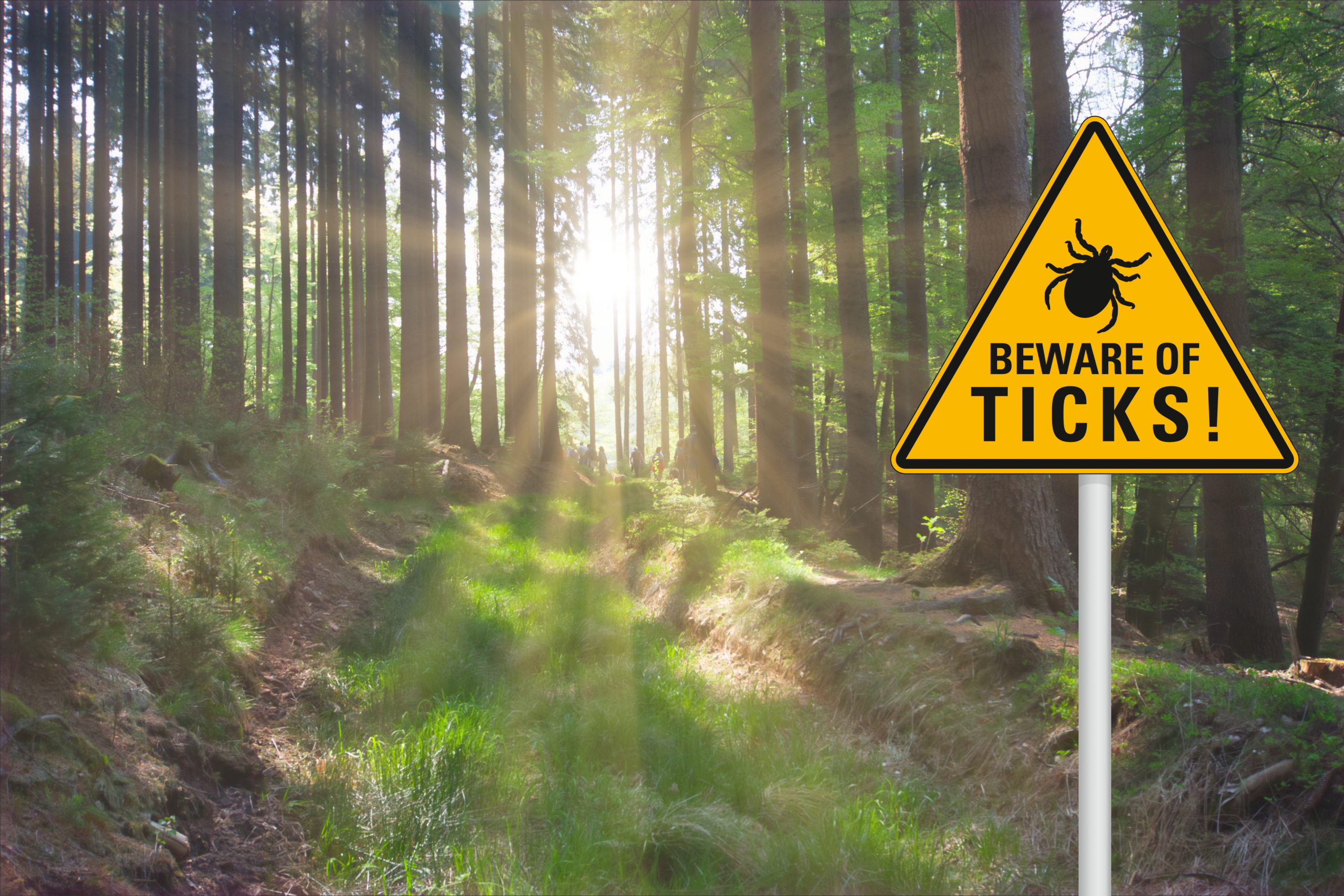Fragrant breezes, and warm, sunny days after a long, cold winter make you yearn to get outdoors and enjoy the beauty and tranquility that mark spring in Greene County. The wooded fields and trails are perfect for a quick hike into nature, but a hidden danger emerges as the grounds thaw. As small as 1/8th of an inch, this little spot of danger is often overlooked but can cause illnesses leading to extreme pain.
Ticks can carry a variety of diseases, but Lyme disease continues to remain one of the top concerns. Lyme disease is transmitted through the bite of blacklegged ticks (Ixodes scapularis or Ixodes pacificus also referred to as deer ticks). During the bite, the bactierum Borrelia burgdorfei is transferred from the tick to its prey – which doesn’t have to be human. That’s right – your pets, especially dogs, can get Lyme disease from the bite of a tick.
Blacklegged ticks are much smaller than common dog ticks and are harder to spot. As an adult, they are about the size of a sesame seed. Most people are infected though the bite of immature ticks, known as nymphs. Nymphs are incredibly tiny and hard to see because they are less than 2mm; they most commonly bite in the spring and summer. Adult ticks can also transmit Lyme disease bacteria, but are much more likely to be discovered due to their larger size; they most commonly bite during the fall.
In Pennsylvania, Lyme disease has been on a steady rise, reaching a peak in 2017; Pennsylvania leads the United States with most reported cases of Lyme disease. Thanks to extensive efforts to educate the public, 2018 saw a small decrease in the total number of reported cases in most areas of Pennsylvania, but Greene County saw an increase, as we have every year since 2011.
In an effort to be more proactive, Greene County joined with the DEP in 2019 and began collecting live ticks in the area to be sent to the DEP for study. “This survey will provide important data that will help us better understand these arachnids in our environment and inform Pennsylvanians on how, when and where to avoid getting bitten by a disease-carrying tick,” said DEP Secretary Patrick McDonnell.

If left untreated, Lyme disease can cause a wide range of symptoms dependent on the stage of infection. Signs of early Lyme disease (three to thirty days after bite) can include: fever, chills, headache, fatigue, muscle and joint aches, swollen lymph nodes or erythema migrans (EM) rash. EM occurs in approximately 70 to 80 percent of infected persons and begins, on average, about 7 days after the bite. It begins at the initial bite site and expands outward, sometimes clearing as it expands and giving it a bullseye appearance.
Later symptoms of Lyme disease include: severe headaches and neck stiffness, additional EM rashes, facial palsy, arthritis with severe joint swelling, intermittent pain in tendons, muscles, joints, and bones, heart palpitations, dizziness, shortness of breath, nerve pain, shooting pains, numbness, or tingling in the hands/feet and inflammation of the brain and spinal cord.
Once treated with appropriate antibiotics in the early stages, people usually recover rapidly and completely but patients can often have symptoms of pain, fatigue, or difficulty thinking that lasts more than 6 months after finishing treatment. This is called Post-Treatment Lyme Disease syndrome. There is currently no proven treatment for PTLDS. Patients treated In later stages also respond well to antibiotics, but may have suffered from long-term damage to the nervous system or joints.
The best way to avoid Lyme disease is to take proper precautions while outside, especially if you will be in warm, damp, dark areas. Make sure that you use an EPA-registered insect repellant containing DEET and wear light-colored clothing. Once inside, shower as soon as possible and check for ticks – especially in the armpits, behind the knees, near the groin and in hair. If you find a tick, remove it immediately – in most cases, ticks must be attached for 36 to 48 hours before the Lyme disease bacteria can be transmitted. Tumble your clothes in a drier on high heat for ten minutes to kill ticks that may have traveled in on your clothes.
Removing a tick can be done easily using fine-tipped tweezers. Grasp the tick with the tweezers as close to the skin as possible and pull upward with a steady, even pressure – don’t twist or you might break the mouth parts off in the skin. Clean the bite area and your hands thoroughly and dispose of the tick by putting it in alcohol, flushing it, wrapping it in tape, or putting it in a sealed container.
To prevent Lyme disease in your dog, consider a Lyme disease vaccination from your vet. Make sure that you are using a tick prevention product on your pet, and check them for ticks daily.
